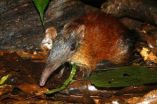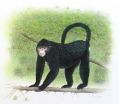(Press-News.org) Journals need to develop policies to handle the inevitable competing interests that arise when they publish papers that may bring them reprint revenue or increase their impact factors. This is the conclusion of a research article by Andreas Lundh and colleagues from the Nordic Cochrane Centre published in this weeks PLoS Medicine. An accompanying perspective by Harvey Marcovitch, ex-chair of the Committee on Publication Ethics (COPE), and an editorial from the PLoS Medicine Editors discusses this issue further, concluding that journals should apply the same degree of transparency that they require from authors, to themselves.
The article examined randomized clinical trials published in six general medical journals (not including PLoS Medicine but including New England Journal of Medicine (NEJM), the British Medical Journal (BMJ), The Lancet, Annals of Internal Medicine, Archives of Internal Medicine, and JAMA,) over two time periods, 1996� and 2005�, and assessed which of the trials were supported wholly, partly, or not at all by industry. They then used the online academic citation index Web of Science to calculate an approximate impact factor for each journal for 1998 and 2007 and calculated the effect of the published RCTs on the impact factor.
The proportion of RCTs with sole industry support varied between journals. 32% of the RCTs published in the NEJM during both two-year periods had industry support whereas only 7% of the RCTs published in the BMJ in 2005� had industry support. Industry-supported trials were more frequently cited than RCTs with other types of support; omitting industry-supported RCTs from impact factor calculations decreased all the approximate journal impact factors. For example, omitting all RCTs with industry or mixed support decreased the 2007 BMJ and NEJM impact factors by 1% and 15%, respectively.
Finally, the researchers asked the Editor of each journal about journal income from industry sources. For the BMJ and the Lancet, the only journals that provided this information directly, income from reprint sales was 3% and 41%, respectively, of total income in 2005�.
The authors conclude that "journals [should] abide by the same standards related to conflicts of interest, which they rightly require from their authors, and that the sources and the amount of income are disclosed to improve transparency." Commenting on the article, Harvey Marcovitch agrees, saying "Journal editors have expended much time and effort in teasing out how to handle authors' and reviewers' competing interests. They need now to concentrate on their own and those of their employers". In the accompanying editorial "Increased Responsibility and Transparency in an Era of Increased Visibility" the PLoS Medicine Editors, who have posted their own journal's income on the competing interest page of the journal, conclude that "The internet has spurred an intellectual revolution in the dissemination of medical information. Journals have thus far been accepted as one of the most trusted sources of information. It's clear, however, that in order to maintain that trust, journals and editors need to continue to consider all the pressures that can arise in publishing and put in place robust, transparent procedures for handling all the potential conflicts that can arise, whether they are those of authors, editors, or the journals themselves.''
INFORMATION:
'Conflicts of Interest at Medical Journals' by Andreas Lundh and colleagues
Funding: No direct funding was received for this study. The authors were personally salaried by their institutions during the period of writing (though no specific salary was set aside or given for the writing of this paper).
Competing Interests: The authors have declared that no competing interests exist.
Citation: Lundh A, Barbateskovic M, Hrobjartsson A, Gøtzsche PC (2010) Conflicts of Interest at Medical Journals: The Influence of Industry-Supported Randomised Trials on Journal Impact Factors and Revenue – Cohort Study. PLoS Med 7(10): e1000354. doi:10.1371/journal.pmed.1000354
IN YOUR COVERAGE PLEASE USE THIS URL TO PROVIDE ACCESS TO THE FREELY AVAILABLE PAPER: http://www.plosmedicine.org/article/info%3Adoi%2F10.1371%2Fjournal.pmed.1000354
PRESS-ONLY PREVIEW OF THE ARTICLE: www.plos.org/press/plme-07-10-lundh.pdf
CONTACT: al@cochrane.dk
Related PLoS Medicine Perspective by Harvey Marcovitch:
Funding: No specific funding was received for this paper.
Competing Interests: The author declares no competing financial interests. He is employed by BMJ Publishing Group as a freelance associate editor. He is a director of the Council of Science Editors. The views expressed in this paper are his own.
Citation: Marcovitch H (2010) Editors, Publishers, Impact Factors, and Reprint Income. PLoS Med 7(10):e1000355. doi:10.1371/journal.pmed.1000355
IN YOUR COVERAGE PLEASE USE THIS URL TO PROVIDE ACCESS TO THE FREELY AVAILABLE PAPER: http://www.plosmedicine.org/article/info%3Adoi%2F10.1371%2Fjournal.pmed.1000355
PRESS-ONLY PREVIEW OF THE ARTICLE: Please contact press@plos.org for a PDF version of the Perspective article.
CONTACT: h.marcovitch@btinternet.com
The PLoS Medicine Editorial: Increased Responsibility and Transparency in an Era of Increased Visibility
Funding: The authors are each paid a salary by the Public Library of Science, and they wrote this editorial during their salaried time.
Competing interests: The authors' individual competing interests are at http://www.plosmedicine.org/static/editorsInterests.action. PLoS Medicine editors are paid a fixed salary (their salary is not linked to the number of papers published in the journal). PLoS Medicine's direct revenue from 2009 is as follows: Total income US$187,640.59 comprises US$ 179,220.00 in author fees, US$ 8339.81 of advertising and other revenue and US$80.78 in reprint revenues. PLoS's overall revenues for 2009 are listed in the 2009 Progress report http://www.plos.org/downloads/progress_update_lo.pdf.
Citation: The PLoS Medicine Editors (2010) Increased Responsibility and Transparency in an Era of Increased Visibility. PLoS Med 7(10): e1000364. doi:10.1371/journal.pmed.1000364
IN YOUR COVERAGE PLEASE USE THIS URL TO PROVIDE ACCESS TO THE FREELY AVAILABLE PAPER: http://www.plosmedicine.org/article/info%3Adoi%2F10.1371%2Fjournal.pmed.1000364
PRESS-ONLY PREVIEW OF THE ARTICLE: http://www.plos.org/press/plme-07-10-editorial.pdf
CONTACT: medicine_editors@plos.org
Better transparency needed on medical journals' competing interests
Press release from PLoS Medicine
2010-10-27
ELSE PRESS RELEASES FROM THIS DATE:
WHO pesticide regulations should be based on toxicity in humans, not rats
2010-10-27
Current WHO pesticide classifications are based on toxicity in rats but basing regulation on human toxicity will make pesticide poisoning less hazardous and prevent hundreds of thousands of deaths globally without compromising agricultural needs. These are the key findings from a study by Andrew Dawson (South Asian Clinical Toxicology Research Collaboration, University of Peradeniya, Sri Lanka) and colleagues published in this week's PLoS Medicine.
The single most common means of suicide worldwide is agricultural pesticide poisoning. The authors examined the proportion ...
Nature's backbone at risk
2010-10-27
Nagoya, Japan, Wednesday 27 October 2010 (IUCN) – The most comprehensive assessment of the world's vertebrates confirms an extinction crisis with one-fifth of species threatened. However, the situation would be worse were it not for current global conservation efforts, according to a study launched today at the 10th Conference of the Parties to the Convention on Biological Diversity, CBD, in Nagoya, Japan.
The study, to be published in the international journal Science, used data for 25,000 species from The IUCN Red List of Threatened Species™, to investigate the status ...
World's vertebrates face increasing risk of extinction
2010-10-27
A new assessment conducted by 174 scientists from around the world underscores a growing concern about the health of the world's biodiversity, quantifying the rate of decline among vertebrate species on a global scale for the first time. The team's results support the idea that our planet is currently experiencing its sixth mass extinction—nearly one fifth of all known vertebrate species are currently classified as Threatened on the International Union for the Conservation of Nature (IUCN) Red List, and an average of 52 species of mammals, birds, and amphibians move one ...
Mosquito monitoring saves lives and money, analysis finds
2010-10-27
Cutting surveillance for mosquito-borne diseases would likely translate into an exponential increase in both the number of human cases and the health costs when a disease outbreak occurs, according to an analysis by Emory University.
The Public Library of Science (PLoS) publishes the research, led by Emory disease ecologist Gonzalo Vazquez-Prokopec, Oct. 26.
"Our analysis shows that halting mosquito surveillance can increase the management costs of epidemics by more than 300 times, in comparison with sustained surveillance and early case detection," Vazquez-Prokopec ...
New snub-nosed monkey discovered in Northern Myanmar
2010-10-27
An international team of primatologists have discovered a new species of monkey in Northern Myanmar (formerly Burma.) The research, published in the American Journal of Primatology, reveals how Rhinopithecus strykeri, a species of snub-nosed monkey, has an upturned nose which causes it to sneeze when it rains.
Field biologists led by Ngwe Lwin from the Myanmar Biodiversity And Nature Conservation Association and supported by an international team of primatologists from Fauna & Flora International (FFI) and the People Resources and Biodiversity Foundation, discovered the ...
Following lifestyle tips could prevent almost a quarter of bowel cancer cases
2010-10-27
Almost a quarter of colorectal (bowel) cancer cases could be prevented if people followed healthy lifestyle advice in five areas including diet and exercise, says a new study published on bmj.com today.
Researchers from Denmark found that following recommendations on physical activity, waist circumference, smoking, alcohol and diet could reduce the risk of developing bowel cancer considerably – by 23%.
Bowel cancer is the third most common cancer in the UK where more than 38,600 people are diagnosed with the condition every year. It is the second most common cause of ...
Year-long opiate substitution for drug misusers has 85 percent chance of cutting deaths
2010-10-27
Giving people opiate substitution treatment to help with their drug addiction can lead to a 85% plus chance of reducing mortality, according to a new study published on bmj.com today.
Researchers from Bristol and London found that the length of time people had opiate substitution treatment (OST) for had a large impact on its success and the likelihood of death.
Opiate users have a high risk of death, often from overdose.
OST, mostly methadone and buprenorphine, is central to prevention of drug related mortality and often delivered in primary care settings. Over the ...
Continuing biodiversity loss predicted but could be slowed
2010-10-27
A new analysis of several major global studies of future species shifts and losses foresees inevitable continuing decline of biodiversity during the 21st century but offers new hope that it could be slowed if emerging policy choices are pursued.
Led by experts Henrique Miguel Pereira and Paul Leadley, the 23-member scientific team from nine countries, under the auspices of DIVERSITAS, UNEP-WCMC and the secretariat of the CBD compared results from five recent global environmental assessments and a wide range of peer-reviewed literature examining likely future changes in ...
Extinction threat growing for vertebrates, researchers report in Science
2010-10-27
Increasing numbers of birds, mammals and amphibians have moved closer to extinction in the last several decades—but not as far as they would have if no conservation measures at all had been enacted, researchers report.
Their study is being published online by the journal Science, at the Science Express Web site, at 6:30 p.m., U.S. Eastern Time, Tuesday, 26 October. Science is the journal of AAAS, the nonprofit science society.
To assess the status of the world's vertebrates, a large, international research team lead by Michael Hoffmann of the International Union for ...
Scented consumer products shown to emit many unlisted chemicals
2010-10-27
The sweet smell of fresh laundry may contain a sour note. Widely used fragranced products – including those that claim to be "green" – give off many chemicals that are not listed on the label, including some that are classified as toxic.
A study led by the University of Washington discovered that 25 commonly used scented products emit an average of 17 chemicals each. Of the 133 different chemicals detected, nearly a quarter are classified as toxic or hazardous under at least one federal law. Only one emitted compound was listed on a product label, and only two were publicly ...
LAST 30 PRESS RELEASES:
Numbers in our sights affect how we perceive space
SIMJ announces global collaborative book project in commemoration of its 75th anniversary
Air pollution exposure and birth weight
Obstructive sleep apnea risk and mental health conditions among older adults
How talking slows eye movements behind the wheel
The Ceramic Society of Japan’s Oxoate Ceramics Research Association launches new international book project
Heart-brain connection: international study reveals the role of the vagus nerve in keeping the heart young
Researchers identify Rb1 as a predictive biomarker for a new therapeutic strategy in some breast cancers
Survey reveals ethical gaps slowing AI adoption in pediatric surgery
Stimulant ADHD medications work differently than thought
AI overestimates how smart people are, according to HSE economists
HSE researchers create genome-wide map of quadruplexes
Scientists boost cell "powerhouses" to burn more calories
Automatic label checking: The missing step in making reliable medical AI
Low daily alcohol intake linked to 50% heightened mouth cancer risk in India
American Meteorological Society announces Rick Spinrad as 2026 President-Elect
Biomass-based carbon capture spotlighted in newly released global climate webinar recording
Illuminating invisible nano pollutants: advanced bioimaging tracks the full journey of emerging nanoscale contaminants in living systems
How does age affect recovery from spinal cord injury?
Novel AI tool offers prognosis for patients with head and neck cancer
Fathers’ microplastic exposure tied to their children’s metabolic problems
Research validates laboratory model for studying high-grade serous ovarian cancer
SIR 2026 delivers transformative breakthroughs in minimally invasive medicine to improve patient care
Stem Cell Reports most downloaded papers of 2025 highlight the breadth and impact of stem cell research
Oxford-led study estimates NHS spends around 3% of its primary and secondary care budget on the health impacts of heat and cold in England
A researcher’s long quest leads to a smart composite breakthrough
Urban wild bees act as “microbial sensors” of city health.
New study finds where you live affects recovery after a hip fracture
Forecasting the impact of fully automated vehicle adoption on US road traffic injuries
Alcohol-related hospitalizations from 2016 to 2022
[Press-News.org] Better transparency needed on medical journals' competing interestsPress release from PLoS Medicine


